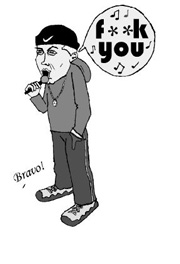If you want a fat-laden, rain forest-chomping McBurger, you still won’t be able to get it in the International District, thanks to a valiant culinary defense mounted by an alliance of community groups led by the Interim Community Development Association. Interim, an advocacy group that develops affordable housing in the ID, and others recently mounted a successful drive opposing the location of a new McDonald’s franchise at Fifth and Jackson, in a prime spot across from Paul Allen’s new Union Station development and close to the two new publicly financed stadiums.
McDonald’s executives announced last week that they wouldn’t pursue the new location. According to McDonald’s regional real estate manager Donald Becka, the company questioned its “ability to be successful there both immediately and well into the future. There is a fair amount of dissent. . . .”
This isn’t a new battle; community activists heatedly opposed the construction of the Kingdome in the 1970s on the grounds it would destroy the unique character of the ID. It didn’t, and now McDonald’s won’t.
According to lead organizer Lydia Cabasco, Interim met with McDonald’s executives in February, presenting community concerns and petitions. The main concern was gentrification, both financial and cultural. Financially, the booming development at the west end of the International District, where the city is pushing the stadiums and Paul Allen’s office and exhibition hall complex, threatens to drive small, mom-and-pop business owners to ruin. Culturally, McDonald’s represents corporate monoculture running out local flavors.
Cabasco picks up the story: “There was a meeting on May 16 with McDonald’s, business owners, residents, and the International District Housing Alliance. There were no negotiations, just letting them know that we didn’t want them and that there was a broad base of opposition.
“We just let them know that by any means necessary—direct action, boycott, pickets—[we would do] whatever it would take to keep them out of our neighborhood. We wanted a commitment in writing that McDonald’s wouldn’t locate there or anywhere in the International District.”
A rally on June 22, the same day that McDonald’s announced they were pulling out, drew at least 100 people. Protesters gathered outside the McDonald’s at Third and Pine, a prime example, Cabasco claims, of the neighborhood impact of the franchise that ID activists wanted to avoid. Even then, the news of Mickey D’s departure from Fifth and Jackson was greeted skeptically. “They’ve been disrespectful,” said Cabasco. “They haven’t contacted us personally at all.”
Property owner Michael Chu, who activists have pledged to help find a different tenant, is angry about the activism, claiming that many of the petition-signers lived and worked outside the International District.
According to a Seattle Times article, “Chu and Becka said the McDonald’s exposed a divide in the community between those who insist on tradition and those who can accept change.” This, of course, is subtle editorializing by the Times. Change isn’t the issue; it’s constant and inevitable. What’s at stake is the type of change to be embraced.
For better or worse, McDonald’s has come to represent America’s homogenized culture, where mechanically produced fast food made by low-wage service workers defines an approach to the service economy that a whole slew of businesses emulate—and many consumers love. McDonald’s is, after all, extremely popular. That’s a bitter truth for activists like Cabasco, who would rather see a low-key, personalized approach to promotion of our service economy.
Along with the abandonment of the Mickey D location on the Ave in the University District, and a “working class spheroid missile” sent through the window of a Tacoma McDonald’s recently by members of the Anarchist Bowling League, it hasn’t been a good year for bad McNuggets in these parts. Ever since Jose Bove gave away free cheese at last fall’s WTO conference, encouraging profound disrespect for the golden arches has become something of a local past time.
Did somebody say “Yeeccch”?
Extortionate Music Project
What is it with EMP? Aside from being extremely ugly—along with the new library; this seems to be a requirement of modern, edgy architecture in Seattle—the new interactive museum is drawing an unusual amount of free publicity and advertising from the region’s TV stations and newspapers.
That includes Seattle Weekly, although fortunately our article was not the frothing, unquestioning approach championed by the dailies. And how did this quasi-private, money-generating scam come to be housed on public property in the Seattle Center? Allen seems to be able to get anything he wants from a supine city eager to do his bidding; he is quietly remaking two sections of town—Union Station and South Lake Union—in his image, with virtually no public debate or adherence to a neighborhood plan.
Finally, why does it cost 20 bucks—excuse me, $19.95, and I’m sure Allen will miss the extra nickel—to get into EMP? Allen may want to promote the idea that EMP is the equivalent of a concert-going experience, complete with Ticketmaster surcharges, but a ticket price that high ensures that the artists and youth who make the rock ‘n’ roll he is supposedly celebrating can’t afford to get in. Maybe one of the world’s richest men simply wants more money. It’s a shame the city is cooperating in the venture. But then, we’re building a free football stadium for the guy, too, so why shouldn’t he assume that we’re chumps?







